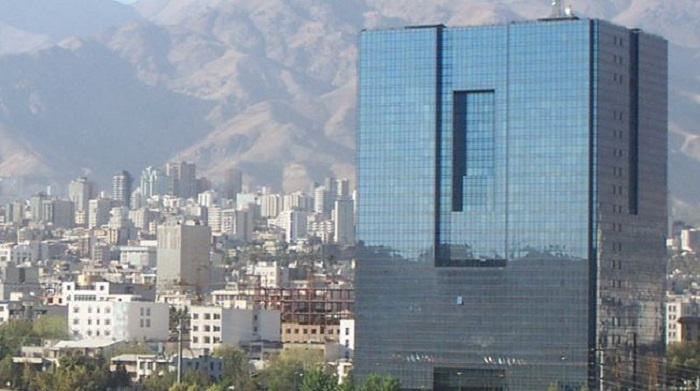Iranian Central Bank Publishes Economic Report

Bank Markazi, the Central Bank of Iran, has published a report on Iran’s economic indicators in spring 2015 in which the trimester’s economic growth rate remains undeclared but signs of stagnation can be seen.
The CBI report was published after a three-month delay on Sunday, according to Tasnim News Agency. The economic growth rate in the Persian calendar year 1393 (from March 21, 2014 to March 20, 2015) is 3 percent with and 2.8 percent without oil.
Economy officials had previously revealed a sharp decline in the economic growth rate in the Persian calendar year 1394 in comparison to the preceding year. Four ministers of Rouhani’s administration had warned the Iranian president about an economic crisis in a joint letter.
According to the CBI report, the country’s oil production reached 3.93 million barrels per day in spring 2015, increasing 78 thousand barrels per day compared to the winter before. Meanwhile, exports of crude oil and petroleum products fell to 1.422 m barrels per day, from 1.428 m barrels per day in the preceding winter.
The report demonstrates that the industrial production index (IPI) in large industries was - 4.2 percent in the first quarter of the current Persian calendar year. Operation licenses issued for industrial units also decreased by 10.2 percent.
According to Tasnim, Iran’s foreign currency reserves and CBI’s foreign assets have dropped $647m in the first quarter, a rare event in the past few years.
The chairman of the Statistical Centre of Iran says he did not state the country’s economic growth rate in the last Persian calendar year in order to avoid division in the society. The industrial growth has been negative in the first six months of the current Persian calendar year, Adel Azar told Tasnim News Agency last Wednesday, as quoted by Shargh Daily.
Pointing out that this is the only figure he has at the moment, he added that the growth rate for the industry sector was -1.2 percent in the first six months of the year but the results in the second six months are needed to draw a conclusion.
“Industry and industry owners are worst hit by the stagnation,” the chairman said, avoiding any further comment on the country’s current economic status.
Meanwhile, the agricultural sector grew by six percent and the services sector’s growth was also positive, according to the chairman who was answering a question regarding a letter written to Iranian President Hassan Rouhani by four of his ministers anticipating stagnation to become an economic crisis.
In September 2015, Iranian Ministers of Economic Affairs and Finance, of Industry, Mines and Trade, of Labor and Social Affairs, and of Defense wrote a joint letter to Rouhani criticizing some uncoordinated decisions and policies, warning that the stagnation casting a shadow on the economy would turn into a crisis if no immediate decision was made.
Commenting on the letter, the chairman of Iran’s Statistical Center said the analyses by experts and industry owners are valued in their own place but figures remain the center’s criteria to analyze the conditions.
“The CBI produced the 1393 economic growth rate sooner than us and since our figure was close to that of the CBI we avoided announcing what we had achieved,” he added. He said the center did not publish its own results in an attempt to avoid division among the people.
Despite the administration’s proposed “anti-stagnation package”, administration officials and economic experts say Iranian industries are still suffering from a crisis.
Iran’s Industry, Mines and Trade Minister, Mohammadreza Nematzadeh, had told reporters in August 2014 that 50 percent of industrial units had either stopped working or faced stagnation.
Masoud Khansari, chairman of Tehran’s Chamber of Commerce, Industries, Mines and Agriculture, had told reporters on December 05, 2015, Iran was experiencing the “biggest” stagnation in the last 35 years.

